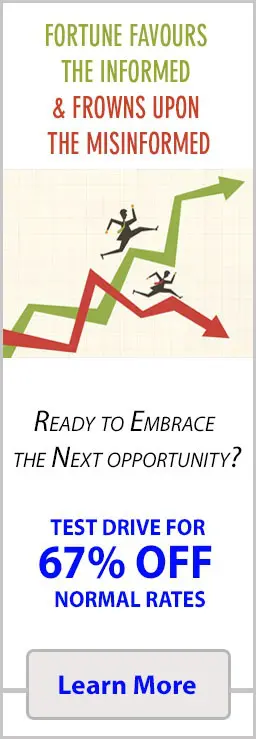Beat the Stock Market: Control Emotions, Control Gains
Feb 17, 2025
Introduction: Escape Humanity’s Price Tag
Want to beat the stock market? Then, learn how to avoid the cost of being human. In a world where emotions, biases, and herd mentality bleed your portfolio dry, your greatest advantage lies in stripping away the imperfections that make us human. Instead of succumbing to panic, exuberance, and irrational decision-making, you have the power to be cold, calculated, and systematic. This isn’t about becoming a ruthless machine—mastering discipline, employing technical analysis, and exploiting mass psychology to turn market volatility into your profit engine.
The Hidden Expense of Being Human
Every investor pays a hidden toll—the cost of being human. That cost is measured in emotional missteps, rash decisions, and the inevitable erosion of capital when fear and greed dictate your trades. We’ve all seen it: the rally fueled by blind optimism, followed by a gut-wrenching crash where fortunes vanish like mist. When human emotions take control, cognitive biases like overconfidence, anchoring, and confirmation bias distort judgment and cloud rational analysis. The result? Investors chase after unrealistic peaks like lemmings in a stampede, only to be trampled by the brutal reality of a market correction.
Take the dot-com bubble, for example. The herd embraced wild narratives of endless growth, dismissing hard fundamentals out of sheer excitement. As sentiment soared, technical signals were ignored, and soon enough, the bubble burst—leaving behind a trail of shattered dreams and enormous financial loss. The cost of being human was paid in full by those who allowed their natural biases to dictate decisions over sober, cold calculation.
Cognitive Biases: The Emotional Parasites
Let’s face it—our minds are wired to be irrational. Cognitive biases are constant companions in the investment realm. The lemming effect, where individuals follow the masses, and the bandwagon theory convinces everyone that if “everyone’s in,” it must be right, relentlessly pulling even the brightest investors off course. When fear and greed surge, our logical centres are hijacked by impulsive emotions: we cling to rising stocks out of overconfidence, or we panic at the first hint of trouble due to loss aversion.
Consider the 2008 financial crisis. Despite clear signs of underlying trouble, countless investors clung to their positions, driven by the misguided belief that downturns would be short-lived. Their inability to cut through the noise—fueled by cognitive dissonance and the sunk cost fallacy—resulted in massive losses. The lesson is plain: to truly master the market, you must neutralize these inherent biases. You can transform instinct into an asset by acknowledging the raw cost of being human and engineering strategies that don’t allow emotion to interfere.
Technical Analysis: Your Rational Weapon
Against the backdrop of chaotic human behavior, technical analysis (TA) emerges as a beacon of objectivity. TA doesn’t care about hype, media spin, or the irrational exuberance of the herd. Instead, it relies on hard data, chart patterns, moving averages, and oscillators to provide clear, actionable signals. When you combine TA with disciplined risk management, you sidestep the emotional pitfalls that catch so many off guard.
For example, when key indicators like the Relative Strength Index (RSI) drop below 30, it’s a scientifically sound signal that stocks are oversold. History is littered with instances where such oversold conditions heralded the perfect entry point for savvy investors. During the depths of the 2008 crash, many technical purists saw RSI levels plummet and seized the opportunity to buy quality firms at rock-bottom prices. Their decisions weren’t based on gut feelings or market gossip—they were driven by pure, unadulterated logic. In a battlefield dominated by human error, TA is the weapon that turns uncertainty into profit.
Mass Psychology: Harnessing the Crowd’s Madness
Understanding mass psychology is equally essential. While technical analysis communicates the “when” of market action, mass psychology explains the “why.” The irrational behaviour of the crowd isn’t random; it follows discernible patterns nurtured by collective biases and emotional contagion. Recognize that when media headlines scream “unprecedented rally” or “record-breaking surge,” the market is likely riding on a wave of speculative fervour that defies reason.
During periods of extreme market euphoria, investors become trapped in an echo chamber of confirmation bias. They convince themselves that the rules have changed this time—even though, historically, human behaviour remains stubbornly cyclical. Massive rallies followed by equally massive corrections are not anomalies; they are predictable outcomes when the crowd’s emotions reach a fever pitch. The successful investor understands this dynamic. Instead of jumping on board at the height of hype, they prepare by watching the collective mood. When mass panic finally hits, it is then, amid the chaos, that quality stocks are available at compelling prices. By turning mass psychology on its head, you use the irrationality of your peers as a strategic advantage.
The Synthesis: Combining Technical Analysis and Mass Psychology
Now, imagine merging the empirical rigour of technical analysis with a nuanced understanding of mass psychology. Alone, each tool is powerful. Together, they form an insurmountable force that enables you to navigate market cycles with surgical precision. This is the essence of a true contrarian approach: you don’t let your emotions rule; instead, you let objective signals and predictable human behaviour guide your strategy.
Consider a scenario where the market has been driven to untenable valuations by blind herd behaviour. TA might indicate severe oversold conditions—RSI lingering below 30, converging moving averages, and bullish candlestick patterns emerging on the charts. Simultaneously, sentiment indicators and media tone reveal overwhelming panic among retail investors. In that moment, when rationality is at its nadir, you act. You buy long-term positions in fundamentally sound companies that have been punished by the irrationality of the moment. Historical examples abound: post-crash recoveries after the dot-com burst and the 2008 meltdown have rewarded those who combined TA with acute insight into mass psychology.
Tactical Options: Leverage to Maximize Gains
But why stop buying stocks? To truly beat the market and avoid the hefty price tag of human folly, you can leverage your positions further using tactical options strategies. One such approach involves selling puts on top stocks when market volatility is peaking. When panic drives option premiums sky-high, selling puts becomes a win-win proposition.
Here’s how it works:
Collecting Premiums: When the market is in turmoil, put options on high-quality stocks are priced generously. Selling these puts earns you premium income, which directly mitigates your risk.
Acquiring Assets at a Discount: If the market dips further and the put is exercised, you acquire shares of a solid company at a price lower than its intrinsic value. In this scenario, you effectively buy quality assets at a bargain.
Leverage with LEAP Calls: Even if the stock isn’t available, you pocket the premium. With these funds, you can acquire LEAP calls—long-dated options that provide upside potential with little additional cash. This strategy offers free leverage, boosting your returns significantly as the market rebounds.
Historical highlights further illustrate this point. During the chaotic aftermath of the 2008 crisis, many tactical investors sold puts on undervalued blue-chip stocks. They collected substantial premiums and, in several instances, got assigned shares at deeply discounted prices. When the eventual recovery unfolded, these investors benefitted from the appreciation of their shareholdings and enjoyed the compounded effect of their options plays—as LEAP calls soared alongside the broader market recovery. In essence, this strategy transforms market fear into a tool for wealth creation.
Discipline: The Ultimate Antidote to Human Fallibility
At the heart of all these strategies lies one unalterable truth: discipline is your shield against the costs of humanity. Emotions may run high, and cognitive biases may be hard-wired into your brain, but discipline is the force that ensures you make decisions based on data rather than impulse. It means having the courage to wait for corrections, to hold steadfast when the crowd panics, and to act decisively when objective signals indicate that the time is ripe.
Consider the archetype of disciplined investing. While millions of retail traders hustle to follow the latest trends and media hype, the disciplined investor sits poised, meticulously watching for oversold conditions and unravelling cognitive biases. They prepare by accumulating cash, building a robust watchlist, and setting clear entry and exit based not on gut feeling but concrete indicators. When the market eventually corrects, these disciplined players step in with surgical precision, bypassing the pitfalls that claimed so many others. They understand that a well-honed strategy built on discipline can offset the true cost of being human—emotional misjudgment, irrational exuberance, and the inability to act methodically.
Embracing the Machine: Automation and Algorithmic Precision
One might ask, “Is it possible to truly avoid the cost of being human?” The answer lies partially in automation. The rise of algorithmic trading and systematic investment strategies is a testament to the desire to remove emotion from the equation. Algorithms don’t suffer from fear or greed. They execute based on pre-determined rules honed through back-tested strategies incorporating technical analysis and market sentiment data.
Automated systems can monitor RSI levels, moving averages, and volatility indices 24/7, alerting you when conditions align with your strategy. Moreover, when combined with disciplined human oversight, these algorithms serve as a force multiplier, ensuring you’re ready to act instantly and decisively when signals arise. While some purists argue that human touch is essential, the truth is that the cold, unyielding precision of automated systems enables you to avoid the costly errors in judgment that come with being human.
The Path Forward: Rituals for Rational Investing
To beat the stock market and sidestep the steep price of human error, you must adopt a multifaceted approach that blends disciplined cash accumulation, rigorous technical analysis, an understanding of mass psychology, and tactical options strategies. Here’s the distilled blueprint:
- Accumulate and Prepare: Hold your cash tight during market exuberance periods. Let others chase mirages while you build the capital necessary to act when sentiment shifts.
- Craft Your Watchlist: Identify quality stocks with solid fundamentals. These should be companies that the market has irrationally punished and are waiting for a rational reset.
- Monitor Technical Signals: Use indicators like RSI, moving averages, and chart patterns to detect when stocks are oversold. Trust these signals over the noise of media hype.
- Understand the Crowd Recognize when mass psychology is at work. When everyone succumbs to panic or mania, the environment is primed for massive corrections.
- Tactical Options Play: Sell puts on quality stocks during high-volatility periods to collect premiums and secure favourable entry points, further enhancing your returns with LEAP calls.
- Employ Discipline Relentlessly: Stick to your plan. Let data, not emotions, drive your decisions. This is the only way to avoid the inherent costs of human fallibility truly.
Conclusion: Beyond Humanity—The Future of Smart Investing
The ancient wisdom of tempered stoicism meets modern market strategy in one brutal truth: if you want to beat the stock market, you must learn to avoid the cost of being human. The imperfections that once defined human decision-making—fear, greed, bias—are liabilities in a landscape where every emotional misstep is recorded in your portfolio’s performance. By embracing a strategy that combines the objective precision of technical analysis with a keen understanding of mass psychology, you create an environment where rationality triumphs over impulse.
This isn’t just an investment strategy; it’s a paradigm shift. It’s a call to evolve—to step away from human emotion’s chaos and adopt a disciplined approach that values cold calculation over passionate folly. The market rewards those who prepare in silence while others shout. It rewards the investor who can ignore the lure of bandwagon trades and remains steadfast in the face of irrational exuberance. And ultimately, it rewards those willing to act as if the inherent cost of being human no longer burdens them.
In the relentless pursuit of market mastery, every percentage point gained is a victory over our nature. Every strategically timed entry, every well-planned option play, is a step toward a future where decisions are guided by reason and data, not by the unpredictable whims of emotion. Embrace the discipline, harness the tools, and reject the fallacies that have cost countless investors dearly. Your success in the market depends not on your ability to mimic the crowd but on your willingness to evolve beyond the very essence of being human.













